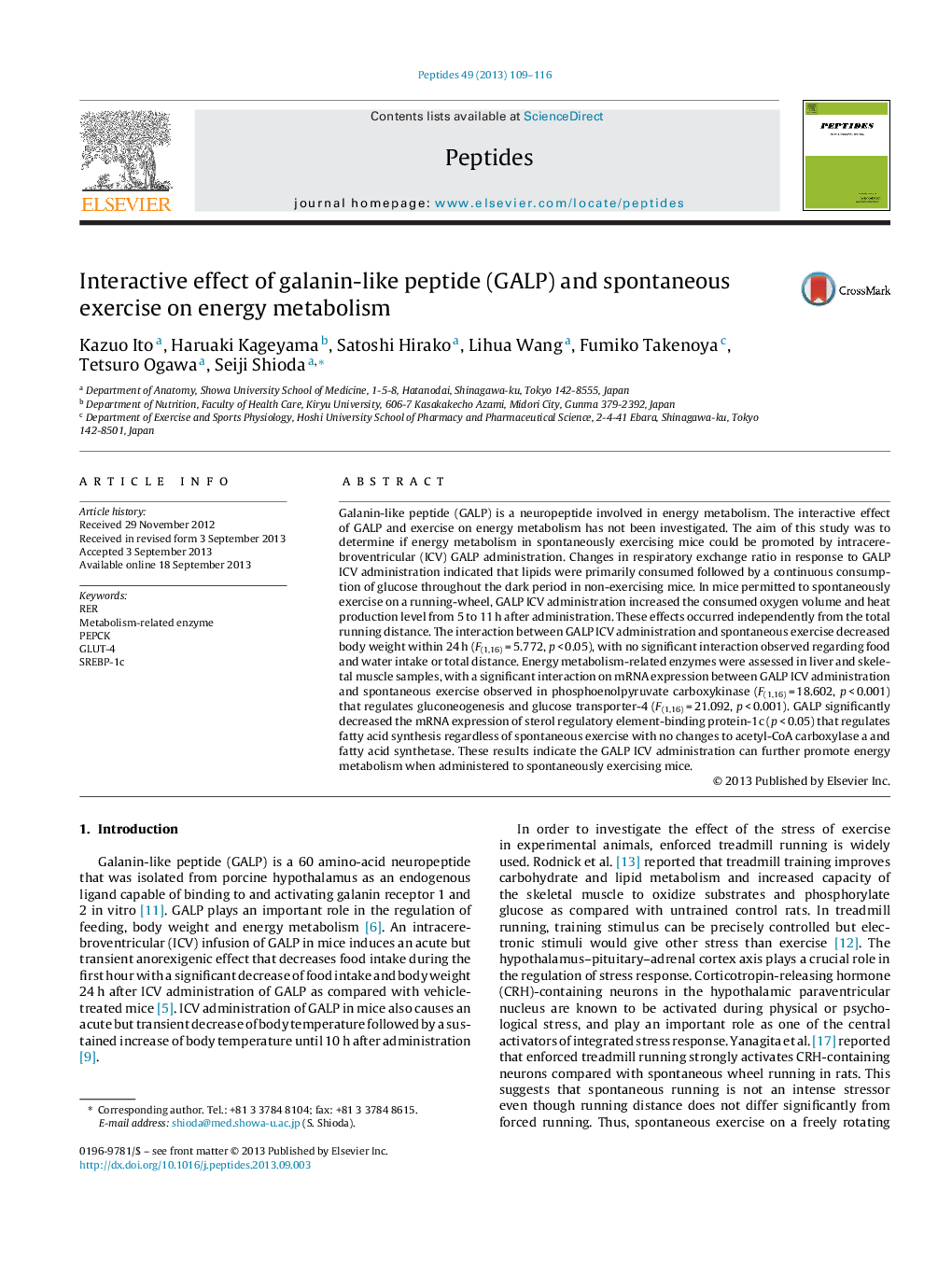| Article ID | Journal | Published Year | Pages | File Type |
|---|---|---|---|---|
| 2006178 | Peptides | 2013 | 8 Pages |
•GALP promoted not only glucose but also lipid metabolism in mice.•GALP increased energy metabolism and decreased body weight in exercising mice.•GALP suppressed gluconeogenesis and fatty acid synthesis in mice.•Decreased gluconeogenesis and fatty acid synthesis by GALP reduced body weight.
Galanin-like peptide (GALP) is a neuropeptide involved in energy metabolism. The interactive effect of GALP and exercise on energy metabolism has not been investigated. The aim of this study was to determine if energy metabolism in spontaneously exercising mice could be promoted by intracerebroventricular (ICV) GALP administration. Changes in respiratory exchange ratio in response to GALP ICV administration indicated that lipids were primarily consumed followed by a continuous consumption of glucose throughout the dark period in non-exercising mice. In mice permitted to spontaneously exercise on a running-wheel, GALP ICV administration increased the consumed oxygen volume and heat production level from 5 to 11 h after administration. These effects occurred independently from the total running distance. The interaction between GALP ICV administration and spontaneous exercise decreased body weight within 24 h (F(1,16) = 5.772, p < 0.05), with no significant interaction observed regarding food and water intake or total distance. Energy metabolism-related enzymes were assessed in liver and skeletal muscle samples, with a significant interaction on mRNA expression between GALP ICV administration and spontaneous exercise observed in phosphoenolpyruvate carboxykinase (F(1,16) = 18.602, p < 0.001) that regulates gluconeogenesis and glucose transporter-4 (F(1,16) = 21.092, p < 0.001). GALP significantly decreased the mRNA expression of sterol regulatory element-binding protein-1c (p < 0.05) that regulates fatty acid synthesis regardless of spontaneous exercise with no changes to acetyl-CoA carboxylase a and fatty acid synthetase. These results indicate the GALP ICV administration can further promote energy metabolism when administered to spontaneously exercising mice.
